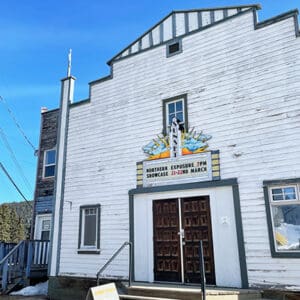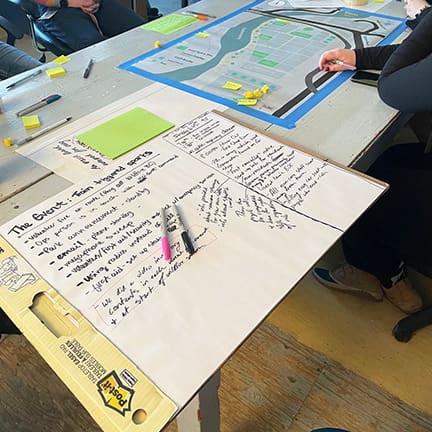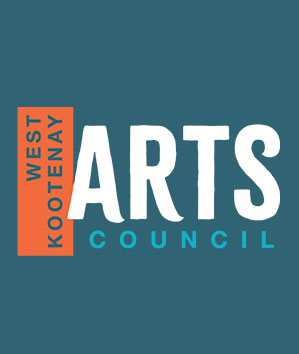From our Executive Director: Field Notes from Northern Exposure 2024

The 2024 Northern Exposure conference brought together arts managers, festival directors, artists, emergency responders and community recovery specialists in sunny Wells, BC. Elyssia Sasaki of Island Mountain Arts—in partnership with Elliott Hearte of Arts BC and Carla Stephenson of the Rural Arts Inclusion Lab—welcomed us into conversations about how to prepare for extreme climate events as we go about managing our organizations, particularly when planning for large-scale events.
A session titled “What Happened Last Summer?” brought the urgency of this conversation to the forefront. 2 Rivers Remix, an organization that hosts an annual outdoor “feast of contemporary Indigenous music and culture,” began in Lytton, BC. Technical Director James Still spoke of the challenges of pivoting an entire year of programming following the fire that burned 80 per cent of the village of Lytton in 2021. Focusing now on pop-up events in highly rural and remote communities and reserves, the organization is working to balance increasing festival attendance with the complexity of hosting live events in areas with few services and amenities.
When Nimble Fingers Folk Festival delayed the start of its 2023 festival due to forest fires blocking the highway to the event, it managed to offer a scaled-back presentation of music at a borrowed venue (a racetrack campsite!) to a smaller crowd of folks who were willing to reroute. Staring down what is likely to be another intense fire season, it has already made the call to cancel its 2024 festival, giving staff a chance to recover and regroup. Festival Director Peter Mynett left us with two equally pressing questions:
- When is it safe to host events now?
- What are the short- and long-term consequences for our communities if we don’t host these events?
While these stories felt overwhelming, the good news is that there are many skilled planners and first responders who are ready to act in the event of an emergency. As arts organizers, we don’t need to reinvent their planning, but we do need to build relationships with these regional officials and communicate proactively with them about our plans.
Irene Israel, the Manager of Emergency Program Services for the Cariboo Regional District, encourages any organization hosting a large event to let its municipality and district know about its plans well in advance. In a town like Wells, with a population of approximately 220, the swell of people attending its annual arts festival (an additional 2,000) creates considerable shifts in emergency management strategies and responses.
Isreal also emphasised that emergency preparedness begins with making preparations for ourselves, our households and our loved ones. Keeping emergency kits at home is critical; she also recommended signing up for emergency alerts when travelling. Text-based notifications from the municipality or district you’re visiting will ensure you’re up to speed on any critical news while there.
Deb Borsos, a community recovery operations specialist based in Argenta, reminded us about the importance of supporting entities like our local radio stations; in emergency scenarios and throughout recovery, these highly local outlets often provide the most timely and relevant information.
A visual artist herself, Borsos shaped many of the week’s exercises, from a hazard-identification walk through the streets of Wells, to a tabletop emergency planning exercise in which teams strategized getting crowds to safety during a hypothetical festival with an encroaching wildfire.
One of the most empowering messages of the Northern Exposure gathering was that the arts are not only impacted by events outside of our control; we also have a critical role to play in helping communities recover after disaster strikes.
Scotia Monkivitch, Executive Officer of Australia’s Creative Recovery Network, joined us virtually from Brisbane to share the network’s experiences bringing the arts into conversations with other systems actors and sharing the value the arts can bring to emergency planning and recovery work.
Monkivitch believes that imagination is the biggest gift the arts can bring this work. The arts can add value to existing community preparedness activities, “deepening a relational, people-centred approach.” Even before disaster strikes, the social infrastructure that the arts provide can have a significant impact on community resilience. Monkivitch highlighted research demonstrating that “more durable social connections means that recovery happens faster.”
The network recently launched a handbook providing practical advice and best practices for those looking to learn more about creative approaches to emergency preparedness, response and recovery.
What I’m taking away from my time in Wells is that it’s never too late to think about preparing an arts organization for an emergency. I encourage my colleagues to reach out to their municipalities and regional districts to share information and open a line of dialogue; when the time comes for a thoughtful, coordinated emergency response, you’ll be grateful to have those connections in place.
Do you have an event coming up this summer? There are some fantastic resources out there to help keep staff and event-goers safe. Take a look at Actsafe’s resources on managing heat risk or its recent webinar Hot and Smoky: A New Normal about managing the challenges of heat and wildfire smoke.
A little bit of planning will go a long way to helping everyone stay safe and have more fun while enjoying art this year.






Kallee Lins is the Executive Director of the West Kootenay Regional Arts Council.

